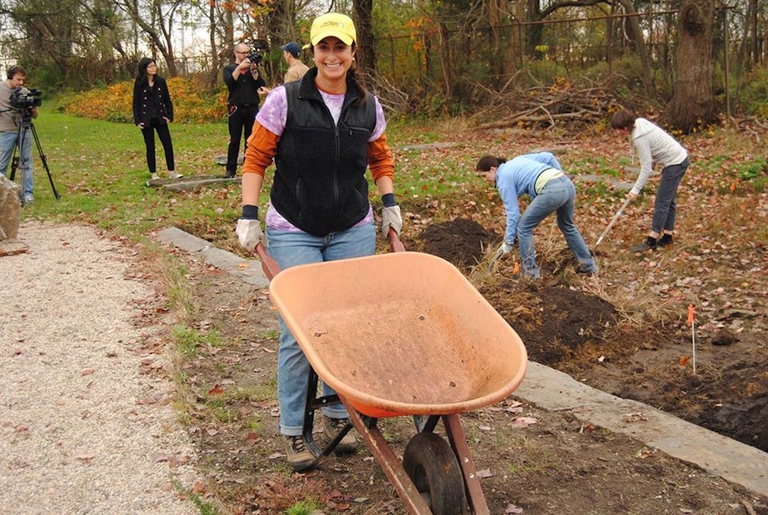
A group of experts in Tokyo suggested pouring radioactive water from Fukushima into the open sea. A marine biochemist explains the consequences of this absurd decision.
When it rains in urban areas, especially when it rains heavily, water flows straight from concrete infrastructure into sewer pipes, which are often antiquated and overloaded, then into surrounding rivers or oceans. Such water causes personal tragedies and generates huge costs when streets overflow, and carries unfiltered pollutants that can damage the environment. The
When it rains in urban areas, especially when it rains heavily, water flows straight from concrete infrastructure into sewer pipes, which are often antiquated and overloaded, then into surrounding rivers or oceans. Such water causes personal tragedies and generates huge costs when streets overflow, and carries unfiltered pollutants that can damage the environment.
The case of Bridgeport, Connecticut
Superstorm Sandy hit the northeast coast of the United States in October 2012, the deadliest hurricane in the area in forty years and the second costliest in all of U.S. history. As with much of the highly urbanised Northeast, coastal Connecticut was inundated by Sandy’s stormwaters.
Bridgeport is Connecticut’s largest city. Given its location along the Long Island Sound, an estuary of the Atlantic Ocean, it is extremely vulnerable to storm surges, coastal floods caused by abnormal weather events such as hurricanes and exacerbated by sea level rise. The city needs to focus on facilitating the movement of rainwater with as little negative impact on neighborhoods, schools, health and water quality as possible in order to build resilience for climate change.
There are a number of areas in the city that are prone to flooding when it rains. One of these areas, adjacent to a historic housing development called Seaside Village, is the site of a transformative project to help address flooding while creating community engagement.
The Seaside Village Stormwater Garden project
A growing body of research demonstrates the effectiveness of green infrastructure as a cost-effective tool for reducing stormwater runoff. Rain gardens, for example, allow such water to be absorbed by the soil, which in turn supports plant species and avoids the water from flowing into sewer pipes.
The Seaside Village Stormwater Garden project in Bridgeport sees the collaboration of the Nature Conservancy‘s Connecticut Chapter, the Urban Ecology Lab at Yale University and community leaders from Seaside Village and the City of Bridgeport. The site, an oasis of native vegetation in an otherwise paved urban landscape, is helping to alleviate flooding in the adjacent parking lot and nearby homes and provides a wetland habitat for animals such as birds and butterflies.
The project has also succeeded in building the community’s involvement in taking care of the underutilised communal lawn. Growing interest and demand led to the creation of a community garden, with raised beds for vegetable production and a large area for dogs.
Frogard Ryan, director of the Nature Conservancy’s Connecticut Chapter explains how the organisation is “building a team around urban issues across the entire state. The team will foster stewardship of the city’s natural infrastructure and contribute to a thriving, more resilient Bridgeport”. The initiatives taking place in this city demonstrate how green infrastructure offers social advantages such as engaging residents in the protection of their homes, environmental benefits such as cleaner, slower flowing water and reduces the human and financial costs of weather events, big and small.
Read more on natural solutions to help cities flourish.
Siamo anche su WhatsApp. Segui il canale ufficiale LifeGate per restare aggiornata, aggiornato sulle ultime notizie e sulle nostre attività.
![]()
Quest'opera è distribuita con Licenza Creative Commons Attribuzione - Non commerciale - Non opere derivate 4.0 Internazionale.
A group of experts in Tokyo suggested pouring radioactive water from Fukushima into the open sea. A marine biochemist explains the consequences of this absurd decision.
The decline in grey and humpback whales in the Pacific and Atlantic Oceans has been traced to food shortages caused by rising ocean temperatures.
The United Nations has launched a major international alliance for ocean science, undertaking a mission close to all our hearts.
The cargo ship that ran aground off the coast of Mauritius on 25 July, causing incalculable damage, has split in two and its captain has been arrested.
The largest coral reef in the world is severely threatened by climate change, but researchers are developing strategies that could contribute to saving the Great Barrier Reef.
Seychelles have extended its marine protected area, which now covers over 400,000 square kilometres, an area larger than Germany.
Norwegian oil giant Equinor had pulled out of drilling for oil in the Great Australian Bight, one of the country’s most uncontaminated areas. A victory for activists and surfers who are now campaigning for the area to be protected forever.
30 per cent of the planet needs to be protected to stop precipitous species decline. The UN has set out its aims for the the COP15 on biodiversity scheduled for Kunming, China in October.
Ocean warming has risen to record highs over the last five years: just in 2019 the heat released into the world’s oceans was equivalent to that of 5-6 atomic bombs per second. The culprit, no doubt, is climate change.








